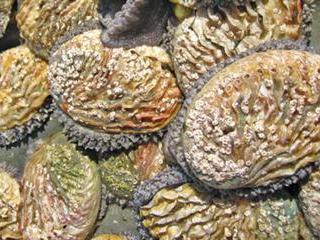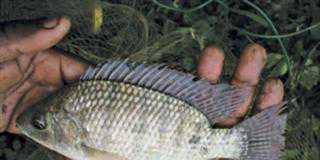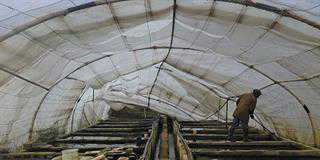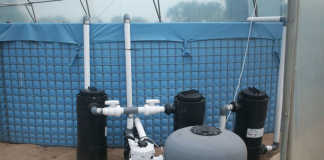
A few decades ago the only option for someone with a passion for farming and the ocean would have been to buy a farm near the sea or go on a beach holiday when the harvest was in, but this is no longer the case. With rising global demand for fish and seafood products, the aquaculture and mariculture industries are expanding quickly.
Adri Claassen, winner of the Department of Agriculture, Forestry and Fisheries’ award for Top Female Farmer Entrepreneur Exporter in the Western Cape has found her vocation, working on one of South Africa’s foremost abalone farms based in Hermanus.
A career in mariculture
Adri, who grew up on a tobacco farm, welcomed the opportunity to get involved in abalone farming which allowed her to pursue her twin passions for marine life and farming. “I started in 2003 as an assistant hatchery manager and became hatchery manager in 2005. In 2008 I was promoted to production manager and in 2010 I became the operational manager of the farm,” she explains.
Adri works for Aquafarm Development (Pty) Ltd, an abalone farm in Hermanus which forms part of the TerraSan group of companies. The farm takes up 1,85ha of land, bordering the ocean, in the new harbour area of this tourist town in the Overberg region of the Western Cape. Staff there boast that they have one of the most remarkable views in the world.
And, during the whale season, Adri can spend her coffee breaks at the water’s edge doing a bit of whale watching. Adri’s enthusiasm is not only for the wide blue Atlantic that serves as the water source for the farming operation, but also for the strange creatures she farms. During a tour of the abalone farm she is keen to share her knowledge of these animals and often draws attention to the unique beauty of the large marine molluscs.
Farming with Abalone
Adri explains that the abalone hatchery is divided into four specialised departments: the broodstock, larvae, settlement and weaning areas. “Brood animals, (broodstock), are selected for their superior appearance and performance characteristics and are housed in a tightly managed environment which maintains them in spawning condition year-round. They are cleaned and fed fresh kelp twice a week,” she says.
Broodstock is divided into different spawning groups, with each group spawned at six-week intervals. The males and females are separated and spawned eggs and sperm are collected and mixed manually in a set ratio to aid good fertilisation. Within a day of fertilisation, a free-swimming larva emerges from the egg membrane. These microscopic, yolk-nourished larvae are housed in filtered seawater tanks, and allowed to develop for six to seven days during which time they are monitored daily.
“After about a week the larvae have developed feeding mouthparts and a foot with which they attach to the substrate. At this stage they are transferred into settlement tanks, and presented with a select diet of micro-algae (diatoms), grown on polycarbonate plates. “As the larvae start grazing on the food source, they will attach to the plates, lose the ability to swim, and metamorphose into perfect baby abalone called spat,” says Adri.
Spat remain on these plates for the next three months during which time they deplete the micro-algae. At this stage the spat should be between 3mm and 5mm long. Prior to moving them the water is dosed with magnesium sulphate. This relaxes the muscular foot, clamped onto the substrate, and enables workers to move them easily without injuring them. They are size sorted and transferred into the weaning tanks.
“Once here, the spat are slowly taken off the micro-algae diet and introduced to a formulated diet called Abfeed,” she says.
Abfeed is a cost-effective, dry feed, manufactured by Marifeed in Hermanus, that improves abalone growth rates. In the weaning tanks the spat, tended by dedicated workers, quickly adapt to the new environment and diet. For the next three months they grow out rapidly, to a length of approximately 10mm, says Adri. Now the spat are big and hardy enough to handle the growout environment.
The water is dosed again, the abalone removed from the substrate, size sorted and transferred to the growout platform where they are placed in baskets in the tanks. “Once here, abalone takes about three to four years to grow to a marketable size. During this time they are fed size-graduated Abfeed pellets. At regular intervals their growth is checked and the data entered into a database that allows Adri to track the performance of each batch.
Health and hygiene is very important as abalone are sensitive to compromised environments. The tanks holding the baskets are cleaned once a week and water supply and removal infrastructure is cleaned once a month. A vet samples the molluscs in a regular health monitoring programme and the SABS tests the product to ensure that it is of an acceptably high quality.
Production costs and marketing
“We harvest the abalone at weights ranging from 30g to 250g depending on market demands,” Adri says. The farm, which produces between 70t and 80t of abalone per year, has shares in a processing facility. About half the abalone produced on the farm is exported live, the other half is canned or dried.
“All the abalone we produce is exported to the Far East. Hong Kong is our largest market and accounts for about 60% of sales while Japan and Taiwan buy about 20% of our stock each,” she says. Adri explains that production costs are high. Abalone farming is labour intensive and about 85 people are employed on Aquafarm.
Water must be continuously pumped ashore to keep the abalone in good health which makes electricity consumption high. Another factor that affects profit margins is the volatility of the rand/dollar exchange rate, since the product is sold in dollars.
She is not keen to discuss prices but says that farmers can get between US$35 (R278)/kg to UD$45 (R357)/ kg, depending on the size and quality of the product.
Future outlook
Projected plans for the farm include implementing cost-saving changes and farming with an emphasis on renewable energy.
The feasibility of a turbine to generate electricity by harnessing the energy of water flowing back into the sea is being investigated. The possibility of using solar power is also being considered. As far as her own plans for the future are concerned, Adri seems happy where she is, and rightfully so. With her career path already lined with achievements, she is content to work towards improving the profitability and productivity of this enterprise.
Contact Adri Claassen on 028 312 4513 or email [email protected].













